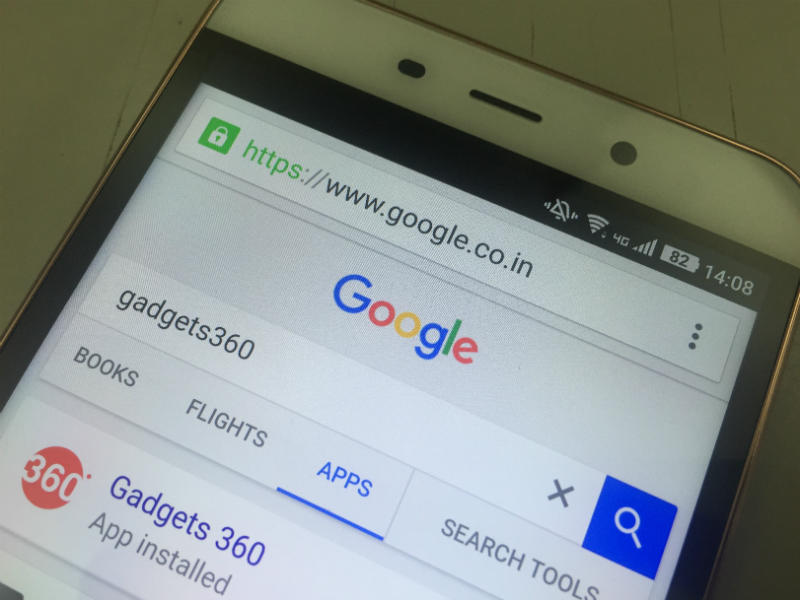Google Chrome to Replace WebView in Android 7.0 Nougat

Google's WebView is a vital component of the Android OS that lets app developers render webpages in apps without requiring a full browser. Now, the tech giant has announced that WebView component will actually become a part of Chrome to bring in more data and memory efficiency.
In order for Chrome to handle WebView rendering, users will have to be running on Android 7.0 Nougat with Chrome v51, or higher. On its developer page, Google mentions, "Starting with Chrome version 51 on Android N and above, the Chrome APK on your device is used to provide and render Android System WebViews. This approach improves memory usage on the device itself and also reduces the bandwidth required to keep WebView up to date. You can choose your WebView provider by enabling Developer Options and selecting WebView implementation. You can use any compatible Chrome version (Dev, Beta, or Stable) that is installed on your device or the standalone Webview APK to act as the WebView implementation."
The standalone WebView APK will no longer be updated by the tech giant, as long as Chrome WebView rendering remains enabled. Developers can activate this new feature by enabling the 'Multiprocess WebView' option. This will run web content on apps through a unique sandboxed process.
Also see: Google Responds to Concerns Over Widespread Android WebView Vulnerability
However, this is an optional feature and developers can opt out of it by selecting WebView Implementation in Developer Options. Developers can then opt for the standalone WebView APK, over the new Chrome WebView rendering if required.
WebView has constantly been tweaked by Google through the years, and it has changed vastly from where it started long ago. The component was based on the Webkit engine, which was replaced by Google's Chromium engine when Android 4.4 KitKat launched, resolving the reported vulnerability in WebView and also enabling quick binary updates to the component via OEM updates. Android 5.0 Lollipop then unbundled WebView from the operating system, allowing it to be downloaded and updated separately by users from Google Play - without requiring an OEM fix.
For the latest tech news and reviews, follow Gadgets 360 on X, Facebook, WhatsApp, Threads and Google News. For the latest videos on gadgets and tech, subscribe to our YouTube channel. If you want to know everything about top influencers, follow our in-house Who'sThat360 on Instagram and YouTube.
Related Stories
- Samsung Galaxy Unpacked 2025
- ChatGPT
- Redmi Note 14 Pro+
- iPhone 16
- Apple Vision Pro
- Oneplus 12
- OnePlus Nord CE 3 Lite 5G
- iPhone 13
- Xiaomi 14 Pro
- Oppo Find N3
- Tecno Spark Go (2023)
- Realme V30
- Best Phones Under 25000
- Samsung Galaxy S24 Series
- Cryptocurrency
- iQoo 12
- Samsung Galaxy S24 Ultra
- Giottus
- Samsung Galaxy Z Flip 5
- Apple 'Scary Fast'
- Housefull 5
- GoPro Hero 12 Black Review
- Invincible Season 2
- JioGlass
- HD Ready TV
- Laptop Under 50000
- Smartwatch Under 10000
- Latest Mobile Phones
- Compare Phones
- Vivo Y19 5G
- iQOO Z10 Turbo Pro
- iQOO Z10 Turbo
- CMF by Nothing Phone 2 Pro
- Motorola Edge 60
- Motorola Edge 60 Pro
- Motorola Razr 60
- Motorola Razr 60 Ultra
- Asus ROG Zephyrus G16 (2025)
- Asus ROG Zephyrus G14 (2025)
- Honor Pad GT
- Vivo Pad SE
- Moto Watch Fit
- Honor Band 10
- Xiaomi X Pro QLED 2025 (43-Inch)
- Xiaomi X Pro QLED 2025 (55-Inch)
- Asus ROG Ally
- Nintendo Switch Lite
- Toshiba 1.8 Ton 5 Star Inverter Split AC (RAS-24TKCV5G-INZ / RAS-24TACV5G-INZ)
- Toshiba 1.5 Ton 5 Star Inverter Split AC (RAS-18PKCV2G-IN / RAS-18PACV2G-IN)

















